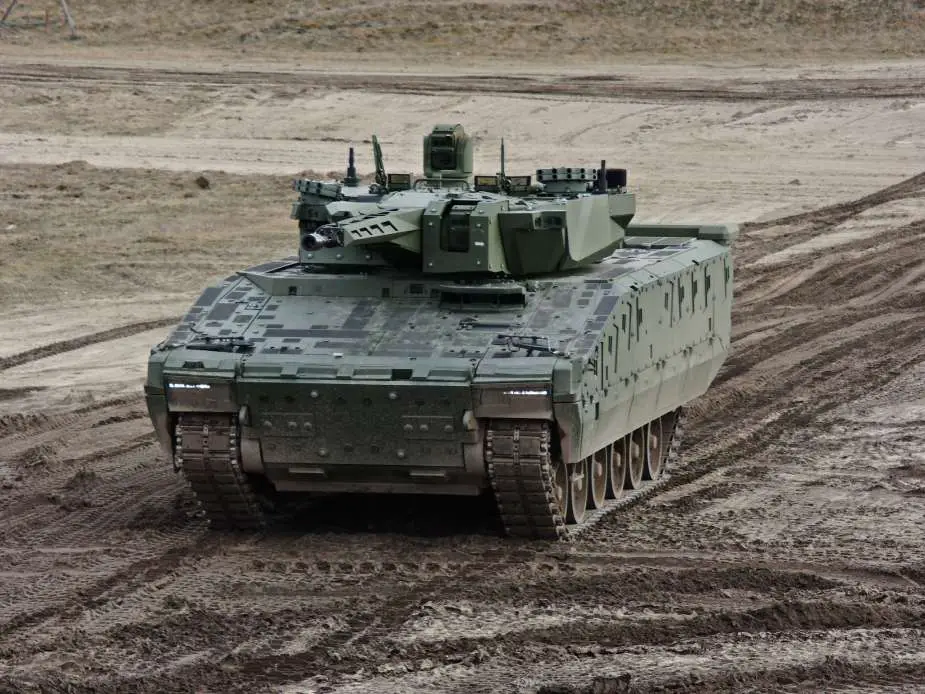Breaking news
DSEI 2023: Rheinmetall showcases Lynx KF41 Infantry Fighting Vehicle as modular solution for modern and future battlefields.
Rheinmetall presents at the DSEI 2023 its Lynx KF41 infantry fighting vehicle. This vehicle is designed to meet the needs of modern and future battlefields, with a focus on modularity, survivability, and digital integration.
Follow Army Recognition on Google News at this link

The U.S. Army has selected the KF41 Lynx for the next phases of its Bradley Infantry Fighting Vehicle replacement program (Picture source: Rheinmetall)
The Lynx KF41 features a modular design consisting of a common driving module and flexible mission modules. These modules can be configured to adapt the vehicle for various roles, such as an infantry fighting vehicle, an air defense system or a command vehicle. Modularity aims to reduce life cycle costs and provides military users with the flexibility to adapt to changing battlefield conditions.
Equipped with a Lance 2 turret, the vehicle can use next-generation programmable 30mm munitions and Spike LR2 anti-tank guided missiles. These features are intended to allow the Lynx KF41 to engage with a variety of threats. Additionally, the vehicle is integrated into the NATO Generic Vehicle Architecture (NGVA), facilitating its inclusion in digital combat management systems.
Hungary took delivery of the Lynx KF41 as early as 2022, making it the first NATO country to do so. Additionally, the U.S. Army has selected the vehicle for the next phases of its Bradley Infantry Fighting Vehicle replacement program, marking a significant step in the vehicle's international adoption.
Rheinmetall has established industrial cooperation with Hungary for the production of the Lynx KF41. This has implications not only for the capabilities of the Hungarian armed forces but also for the local economy. Rheinmetall opened a new factory in Zalaegerszeg, Hungary on August 18, 2023.
The modular and digital features of the Lynx KF41 give it the potential for future upgrades. This could allow the vehicle to adapt to emerging threats and technological advancements, potentially extending its operational lifespan.


























